BUILDING RISK KNOWLEDGE
WHY THE FOUNDATION WAS BORN? >
WHY THE FOUNDATION WAS BORN? >
DISASTERS ARE NOT NATURAL, they are socially built, due to lack of preparation, prevention, mitigation work, education and monitoring. They are natural risks or hazards that impact vulnerable societies. Knowledge help reducing social and structural vulnerability in order to have more resilient societies!
Volcano monitoring requires a variety of techniques to hear and see activity inside a volcano. It involves monitoring volcanoes for signs of change that signal a volcanic awakening. To fully understand a volcano’s behaviour, monitoring must include several types of observations (earthquakes, ground motions, volcanic gases, rock chemistry, water chemistry, remote satellite analysis) on a continuous or near real-time basis.
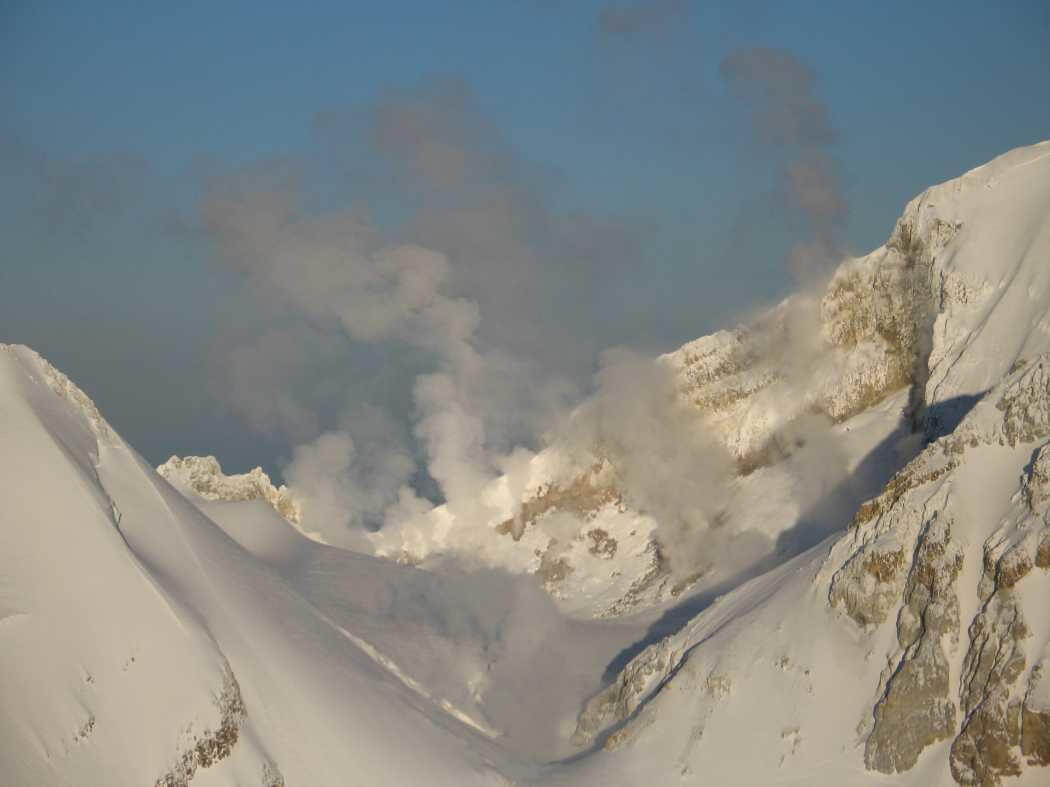
Fumaroles steaming within Sherman Crater, Mount Baker, Washington.
Teams work on the seismic stations. During eruptive breaks, crews work to keep the monitoring stations running.
Scientists collect data from the instrument arrays and then analyse them to look for unusual signals. By comparing the data analysis with similar results from past volcanic events, volcanologists are better able to predict changes in volcanic activity and determine if and when a volcano might erupt in the future.
This is known as disaster risk management.
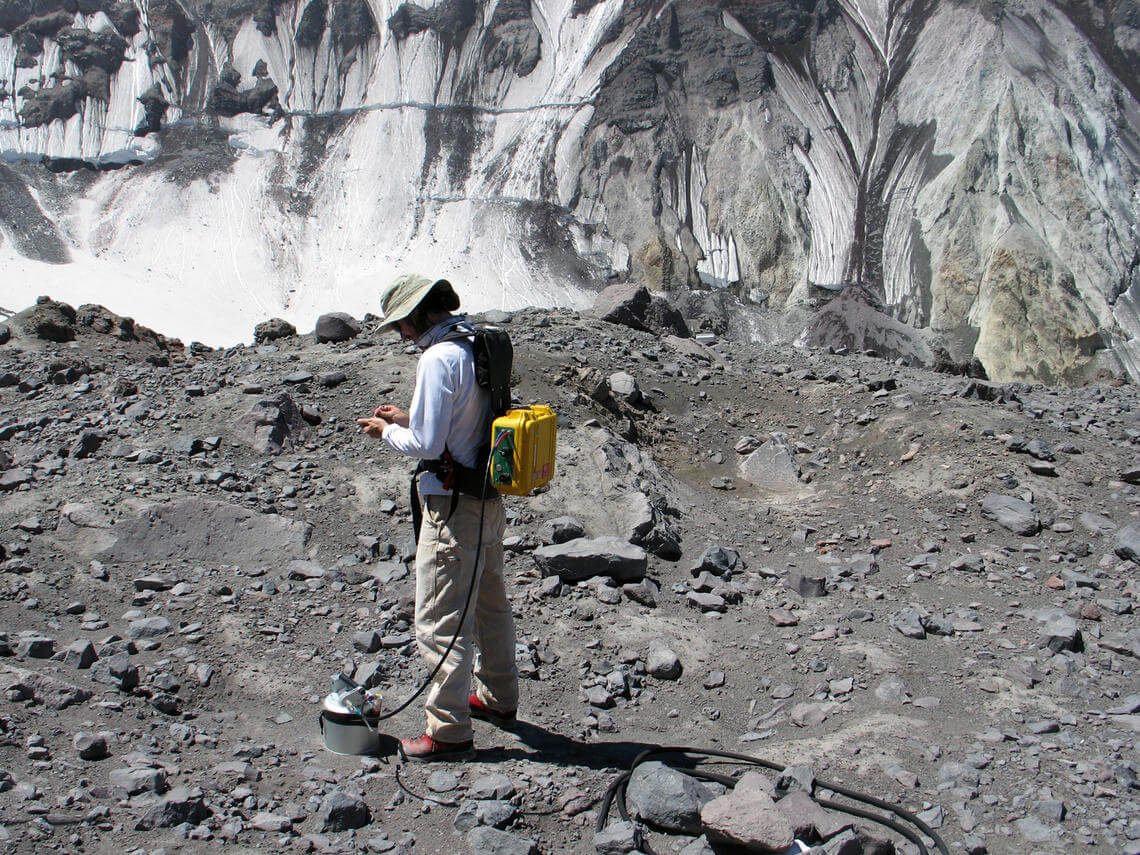
Gas sampling with a CO2 Infrared Spectrometer at Mount St. Helens’ September Lobe lava dome, Washington.
Rapid advances in technology are helping scientists develop efficient and accurate monitoring equipment. These new systems are able to collect and transmit accurate data in real time from the volcano to the observatory offices, improving eruption prediction. It is important that the instruments are installed during quiet periods when the volcanoes are not active so that they are ready to detect the slightest volcanic agitation. Early detection gives people maximum time to prepare for an eruption.
We talk about disaster risk management strategies because there is no such thing as natural risk. Natural hazards exist and become disasters through human mismanagement. There is No natural disasters.
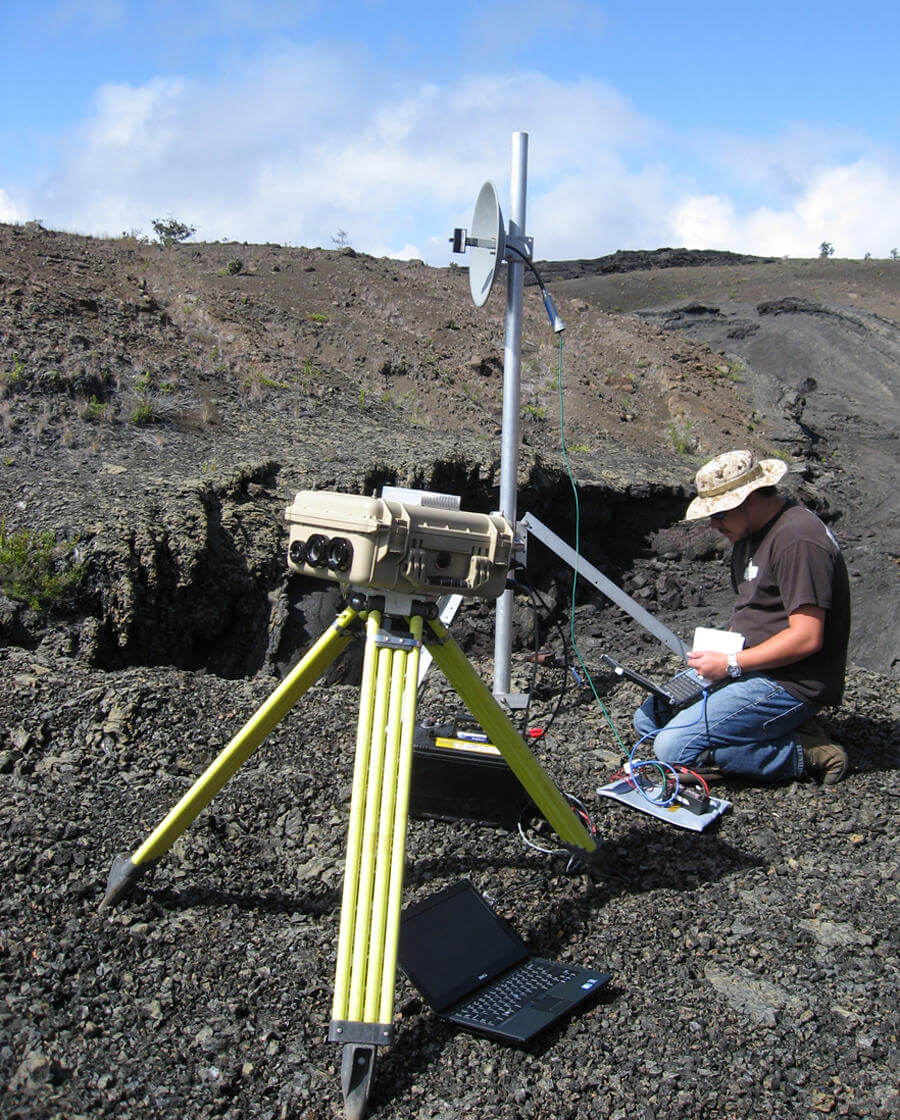
Camera captures SO2 released from Kīlauea’s summit vent. HVO scientist tests the network link between the instrument and the Hawaiian Volcano Observatory.
When a volcano begins to show new or unusual signs of activity, the monitoring data helps to answer the critical questions needed to assess and then communicate timely information about volcanic hazards. Scientists can examine all monitoring data, including gases, ground deformation and satellite images, to determine whether magma or fluid was moving towards the surface. Based on the history of the volcano and the analysis of the monitoring data, scientists can determine the types of magma that are likely to move to the surface. This type of knowledge helps scientists determine the types of volcanic activity that are possible and the associated risks to people. Knowledge of the hazards helps officials determine what real-time warnings are needed to avoid loss of life and property.
Natural hazards exist and become disasters through human mismanagement.
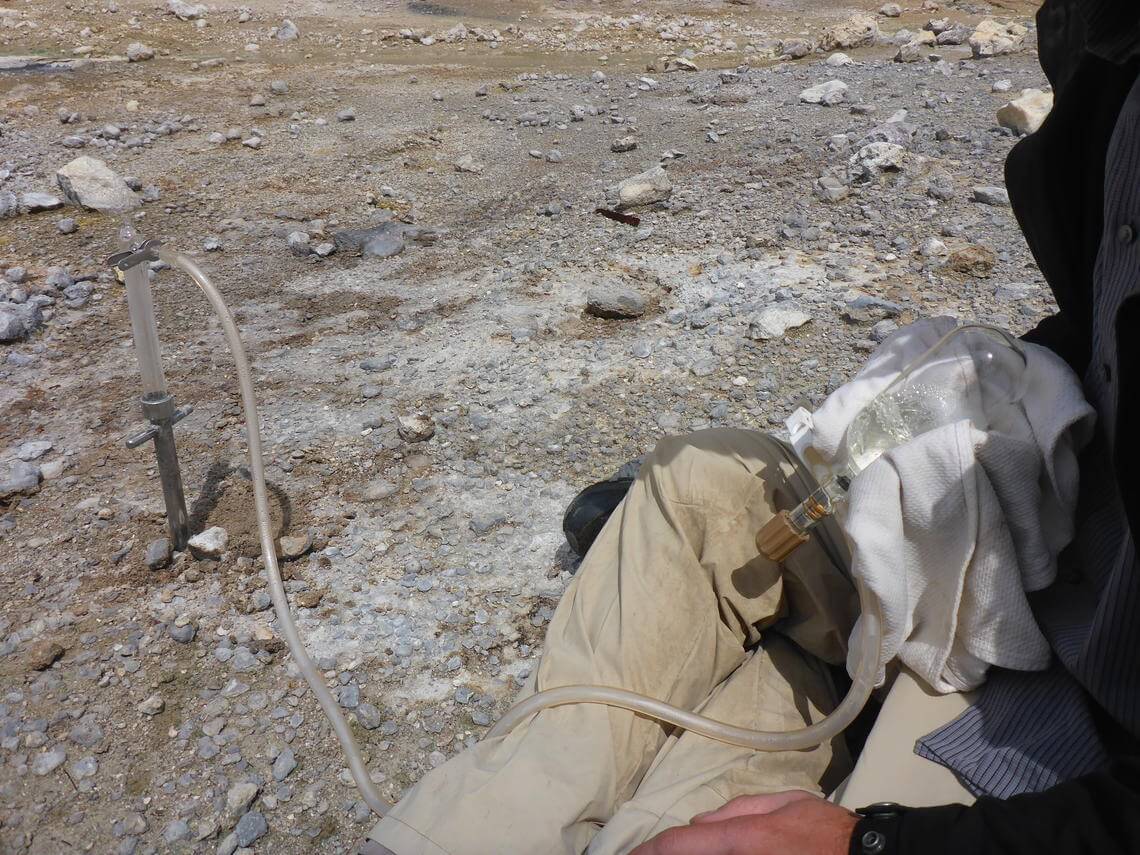
Gas flask sampling at West Astringent Creek, Yellowstone. Open tube with attached gas chamber inserted into ground, gas travels through tube into vacuum flask being held by scientist.
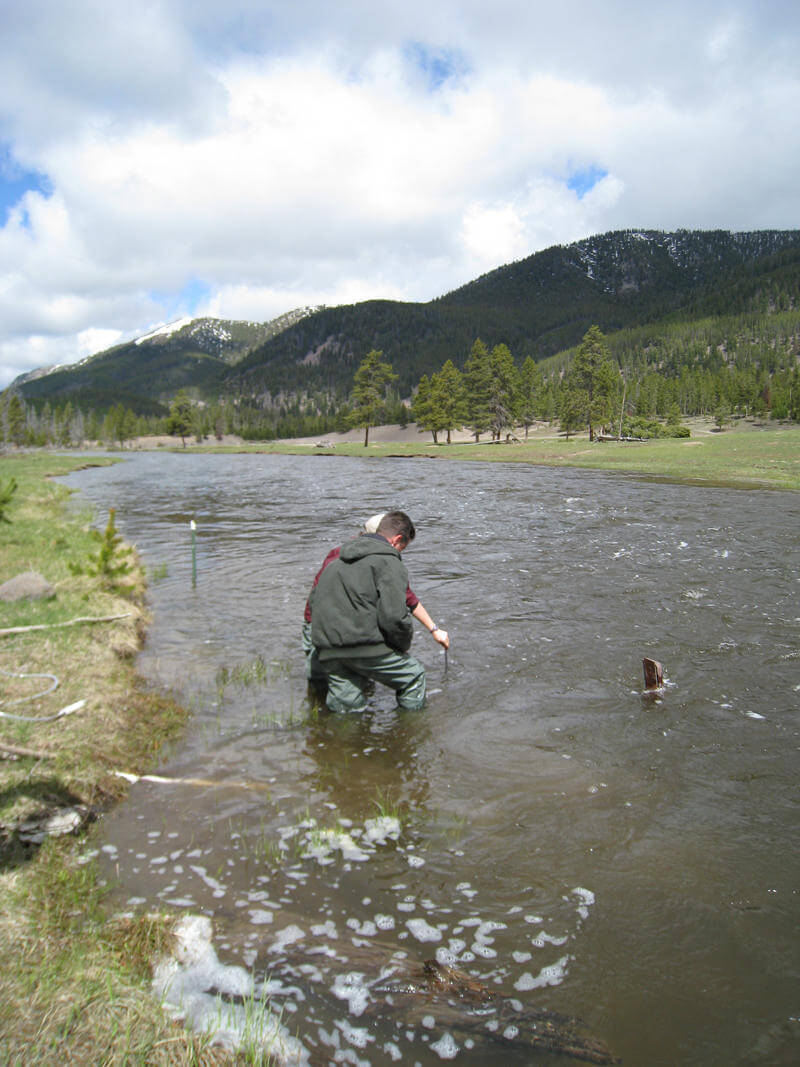
USGS employees deploys a water conductivity/temperature/depth probe (AquaTroll) for a temporary study along the Madison River, Yellowstone.
VOLCANO ACTIVE FOUNDATION RESPONSABILITY
nº 2195 authorised by the Madrid's Minister of Justice
NIF G67314625
SF Abocados Francesc Macia 7 pl17
08029 Barcelona, Spain
We may request cookies to be set on your device. We use cookies to let us know when you visit our websites, how you interact with us, to enrich your user experience, and to customize your relationship with our website.
Click on the different category headings to find out more. You can also change some of your preferences. Note that blocking some types of cookies may impact your experience on our websites and the services we are able to offer.
These cookies are strictly necessary to provide you with services available through our website and to use some of its features.
Because these cookies are strictly necessary to deliver the website, refusing them will have impact how our site functions. You always can block or delete cookies by changing your browser settings and force blocking all cookies on this website. But this will always prompt you to accept/refuse cookies when revisiting our site.
We fully respect if you want to refuse cookies but to avoid asking you again and again kindly allow us to store a cookie for that. You are free to opt out any time or opt in for other cookies to get a better experience. If you refuse cookies we will remove all set cookies in our domain.
We provide you with a list of stored cookies on your computer in our domain so you can check what we stored. Due to security reasons we are not able to show or modify cookies from other domains. You can check these in your browser security settings.
These cookies collect information that is used either in aggregate form to help us understand how our website is being used or how effective our marketing campaigns are, or to help us customize our website and application for you in order to enhance your experience.
If you do not want that we track your visit to our site you can disable tracking in your browser here:
We also use different external services like Google Webfonts, Google Maps, and external Video providers. Since these providers may collect personal data like your IP address we allow you to block them here. Please be aware that this might heavily reduce the functionality and appearance of our site. Changes will take effect once you reload the page.
Google Webfont Settings:
Google Map Settings:
Google reCaptcha Settings:
Vimeo and Youtube video embeds:
The following cookies are also needed - You can choose if you want to allow them:
You can read about our cookies and privacy settings in detail on our Privacy Policy Page.
PRIVACY POLICY